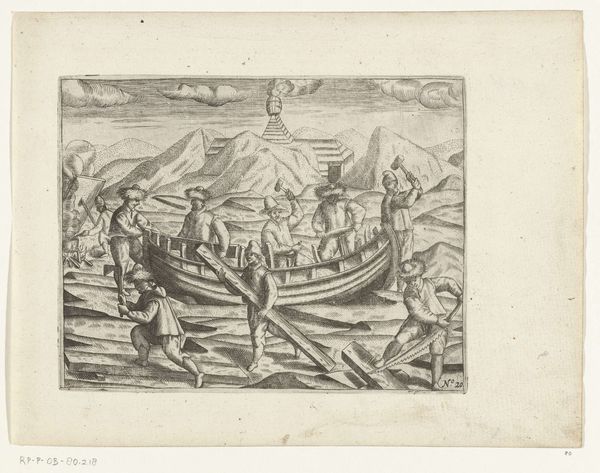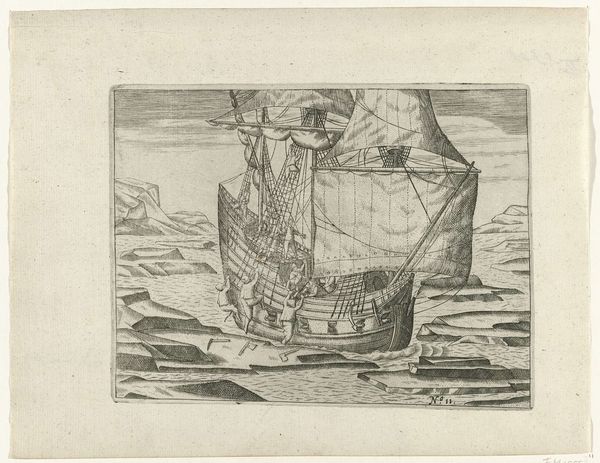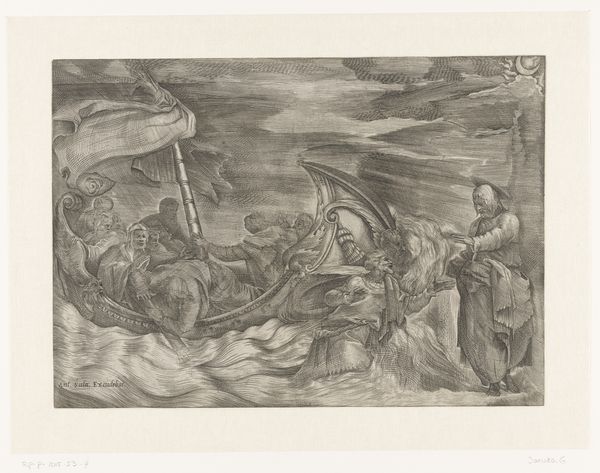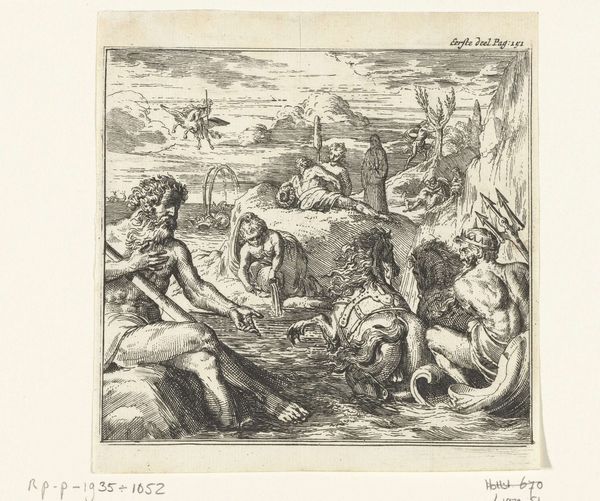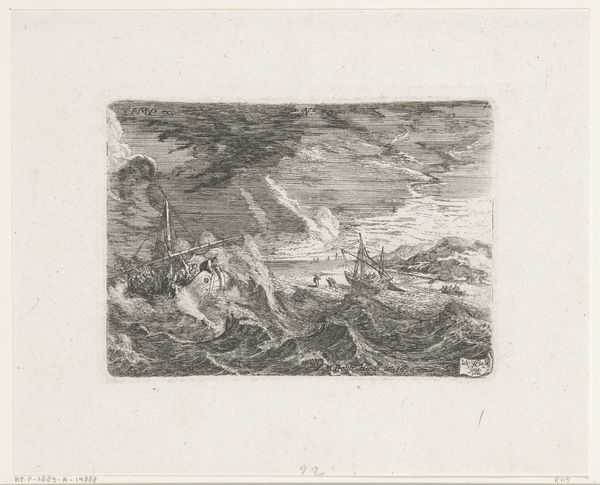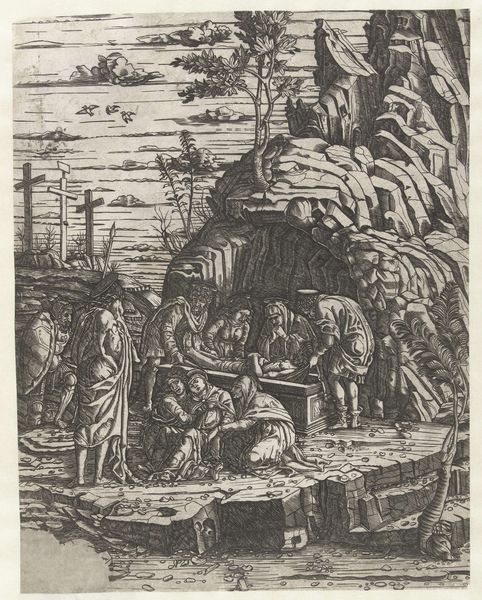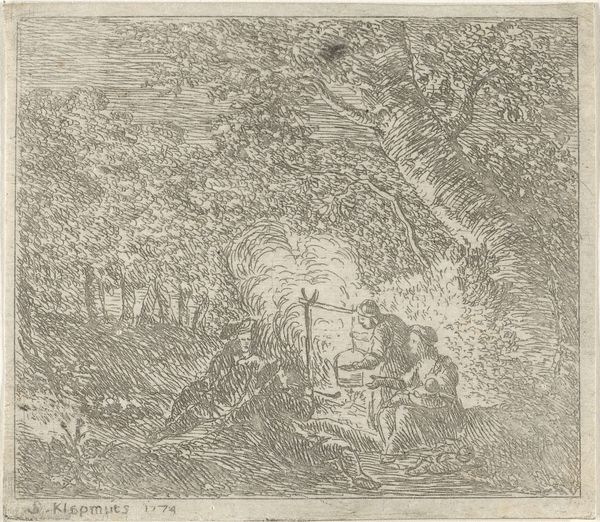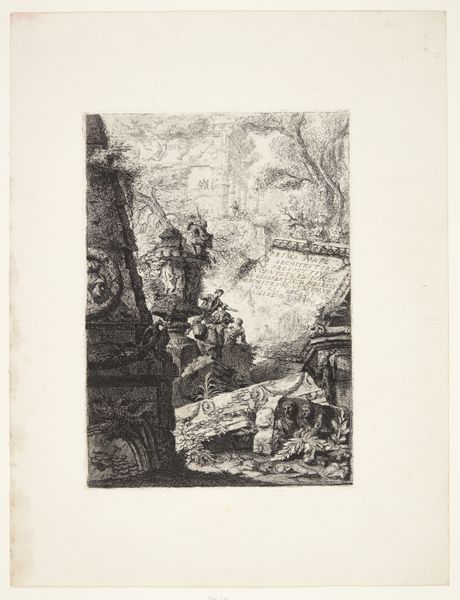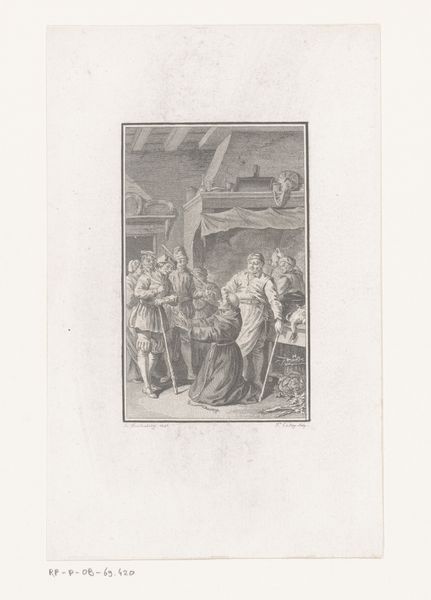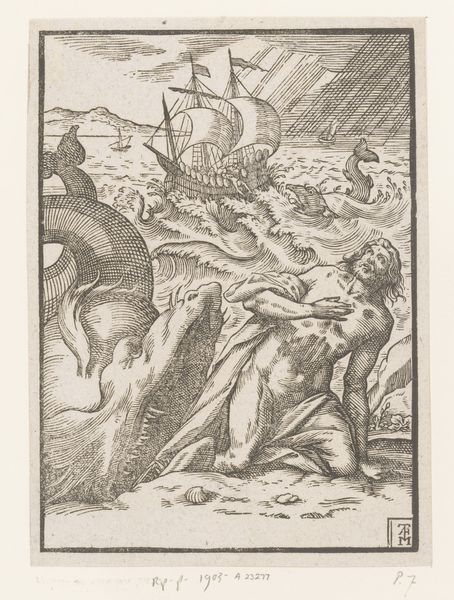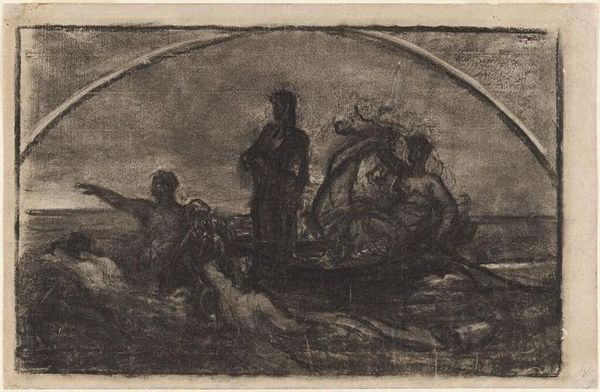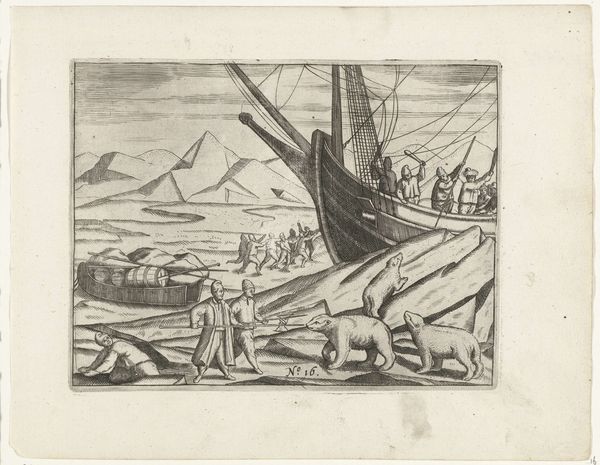
print, etching
#
narrative-art
#
baroque
# print
#
etching
#
figuration
#
line
#
genre-painting
Dimensions: height 73 mm, width 79 mm
Copyright: Rijks Museum: Open Domain
Romeyn de Hooghe etched this illustration for Boccaccio's Decameron, capturing a scene of peril and rescue on the open sea. The women, caught in a tempest, evoke a sense of vulnerability. Note the contrast between the woman covering her face, a timeless gesture of grief, and the other, extending her hand as if to grasp a lifeline. This motif of reaching out echoes through art history, from ancient depictions of supplication to Renaissance portrayals of divine intervention. The emotional charge is palpable—a primal scream against the storm. But consider how this gesture has evolved. In earlier eras, a raised hand might signify divine authority. Here, it speaks to a desperate human plea. The storm itself, a symbol of chaotic fate, has recurred in art and literature, embodying the capricious nature of destiny. These symbols persist, yet they shift, adapting to the anxieties and hopes of each new age.
Comments
No comments
Be the first to comment and join the conversation on the ultimate creative platform.
